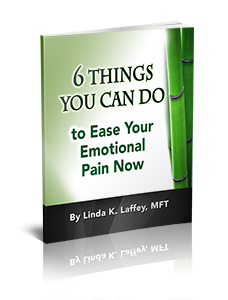By Linda K. Laffey, MFT
Summertime is often a chance to refresh and experience some much-needed relaxation.
Toward the end of the summer, however, many people face intense anxiety that spikes as the days grow shorter. Granted, it’s not the lack of sunlight that catapults negative emotions. Rather, it’s a culmination of events that tend to bombard you all at once.
Accurately pegged “autumn anxiety,” this condition is seasonal, bona fide, and anything but a hoax.
Yet, it’s possible to navigate August and September (and beyond) with confidence and poise. Here’s what you need to know.
What Is Autumn Anxiety?
As mentioned, autumn anxiety is a seasonal condition. It usually impacts people from the last few weeks in August to about mid-September, give or take a few weeks.
Depending on your surrounding climate, you might begin to feel an emotional shift when the weather changes. In fact, those who keep a journal consistently report a dip in their mood during this time frame, even if they don’t normally struggle with anxiety.
Although more intense for a few weeks, symptoms that accompany autumn anxiety are similar to those characteristic of general anxiety—shortness of breath, rumination, nervousness, sleeping trouble, worry, digestive issues, muscle tension, etc.
Why You Feel Anxious in Autumn
Plenty of reasons exist for experiencing autumn anxiety. Some of the most common include:
Autumn Is Ripe with Change
Throughout the summer, your lifestyle is likely consistent. When autumn approaches, however, it signifies changes ahead.
A new school year launches, work assignments often shift, fitness facilities alter their schedules, and even stores stock up on different items. Autumn is a time of dramatic changes.
Processing Newness Takes Energy
As substantial changes occur, it can be hard to adjust. After all, the differences aren’t approaching you one at a time. It’s more like a tidal wave of change.
Remember, processing any type of change can be challenging, let alone a barrage of it. You use a great deal of emotional energy to navigate all the transitions autumn brings. It can wear on you, making you susceptible to intense anxiety symptoms.
Some Catch “Fall Fever”
Along with the numerous changes, many people catch what is known as “fall fever.” Despite this being an unofficial mental health condition, it’s essentially a surge of energy to experience it all before summer ends.
For example, you might join three volunteer organizations or start reading a dozen novels. In short, people with fall fever take on more than they can handle. Unsurprisingly, this quickly leads to overwhelming stress and anxiety.
How to Combat Autumn Anxiety
Many techniques can help you remain calm throughout the autumn season. Some of the most popular include:
Stimulate your brain with low-stress activities. Keeping your brain active is a good thing. During the autumn months, however, engage in activities that are low-stress and easier to take on.
Accept your limitations. Remember that you’re just one person and don’t truly have superpowers. Get to know yourself well, and to accept what you can and can’t handle.
Engage your parasympathetic nervous system. Deep breathing exercises do wonders for alleviating anxiety. Practice activating your five senses, and keep a handful of favorite calming strategies at your disposal.
Be mindful of your health. Consider allergies as a culprit of your off-kilter emotions. Autumn presents a unique air quality, so load up on vitamin D and magnesium to help bolster your immune system.
Take the first step…
If you struggle with autumn anxiety, and you’re ready to begin resolving those issues during the fall season and beyond, I would like to help.
Please contact me via phone or email so we can discuss how we might work together to achieve your therapeutic goals as quickly and effectively as possible.
I look forward to hearing from you.
Linda K. Laffey, MFT


